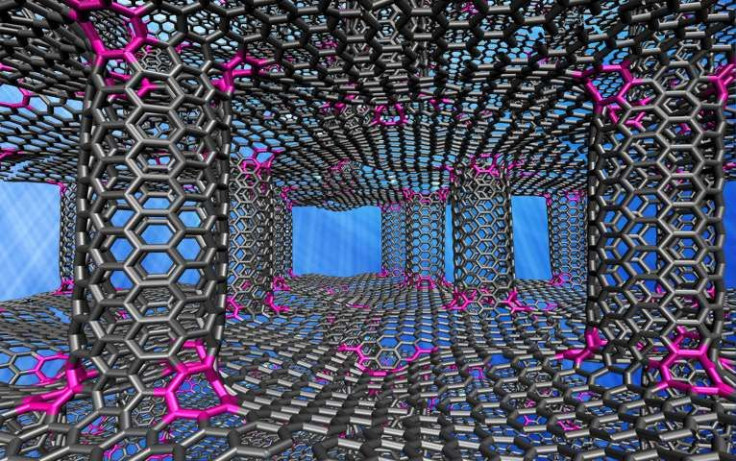Graphene With Carbon Nanotube 'Wrinkles' Conducts Heat Better: Study

Engineers from Rice University, Texas, have proposed a way to make heat transfer of graphene even more efficient. They say that adding a few asymmetric junctions to the material would cause wrinkles, which would make heat flow more efficient by forming bridges.
Material scientists have built an atom-level computer model of a pillared form of graphene. They combined sheets of graphene and covalently bonded carbon nanotubes. They used the nanotubes to connect separate sheets of graphene.
In a new study published in American Chemical Society journal ACS Applied Materials and Interfaces, the team found that manipulating the joints between the nanotubes and graphene has a significant impact on the material's ability to direct heat. This is an important feature as it will help make electronic devices smaller and require more sophisticated heat sinks.
According to a press release on Rice University website, "researchers who study or are working to make pillared graphene have primarily viewed two characteristics of the theoretical material: the length of the pillars and their distance from each other. The new study suggests that a third parameter — the nature of the junction between the graphene and nanotubes — should also be considered."
A seamless connection between flat graphene, the atom-thick form of carbon, and round nanotubes requires adjustments to their characteristic six-member carbon rings. The simplest way is to give half the rings at the junction an extra atom. Six seven-member rings alternating with six six-member rings allow the sheet to make a 90-degree turn to become the tube.
The existing configuration of connecting flat graphene sheets with carbon nanotubes requires a lot of adjustments. But the team found a better way for heat transport. "Replacing six heptagons with three octagons would facilitate the turn while slightly stressing the graphene. That would wrinkle the graphene sheets' top and bottom while not significantly changing transport at the junctions," the report Said.
The researchers expected the wrinkles to lower thermal transport but were very surprised to find that thermal transport across the graphene planes became faster with wrinkles. This led the team to believe that having "fewer rings in the junctions between nanotubes and graphene meant less scattering of heat-carrying phonons, which kept them onboard for the bumpy ride," the report added.
This way was measured to be nearly 20 percent better at transporting phonons than those without the extra rings. "Our results show that subtle features such as this junction configuration have a significant impact on thermal transport," said Rouzbeh Shahsavari, lead of the study, an assistant professor of civil and environmental engineering and of materials science and nanoengineering. "Given the current needs in thermal management and device miniaturization in many nano- and microelectronics, this study provides a new degree of freedom to play and improve thermal transport," he added.
"The reason lies in the geometry," Shahsavari said. "The lower the number of non-hexagonal rings in the junction (for example three octagons versus six heptagons), the lower the number of undesirable rings and thus lower phonon scattering and improved thermal transport." Because the junctions can adopt many different geometries depending on the radius and chirality of the nanotube, there are many more potential configurations to be modeled, he said.
© Copyright IBTimes 2024. All rights reserved.





















